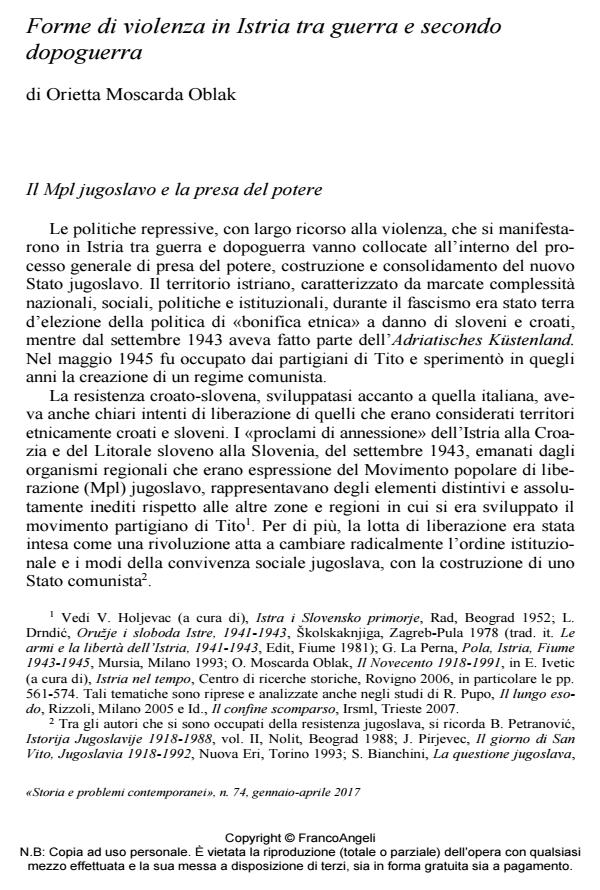Forms of violence in Istria between the World War II and the post war years
Journal title STORIA E PROBLEMI CONTEMPORANEI
Author/s Orietta Moscarda Oblak
Publishing Year 2017 Issue 2017/74 Language Italian
Pages 16 P. 59-74 File size 214 KB
DOI 10.3280/SPC2017-074004
DOI is like a bar code for intellectual property: to have more infomation
click here
Below, you can see the article first page
If you want to buy this article in PDF format, you can do it, following the instructions to buy download credits

FrancoAngeli is member of Publishers International Linking Association, Inc (PILA), a not-for-profit association which run the CrossRef service enabling links to and from online scholarly content.
The authoress develops the theme of violence developed in Istria between the World War II and the post-war years in the process of taking of power and the construction of the new Yugoslav state from a revolutionary Communist-led movement. The violence and repression exercised by the Yugoslav Security Agency (the Ozna-The Department of National Security), proved crucial in the seizure of power and in the showdown against the occupiers (Germans, Italians), but also of all the potential or alleged traitors and of class enemies. A policy of persecution initiated against the clergy of Italian nationality, since they were regarded as opponents to the communist regime’s policies and supporters of maintaining the Italian sovereignty.
Orietta Moscarda Oblak, Forme di violenza in Istria tra guerra e secondo dopoguerra in "STORIA E PROBLEMI CONTEMPORANEI" 74/2017, pp 59-74, DOI: 10.3280/SPC2017-074004